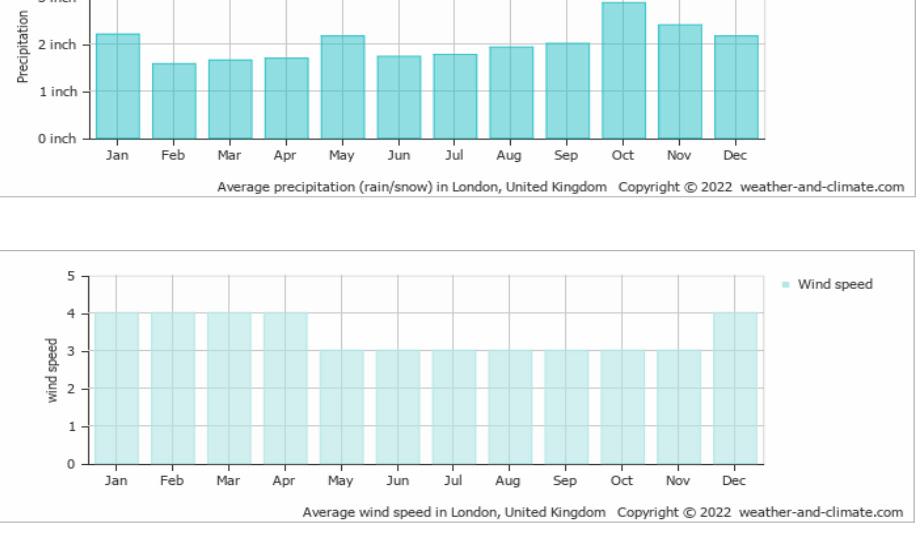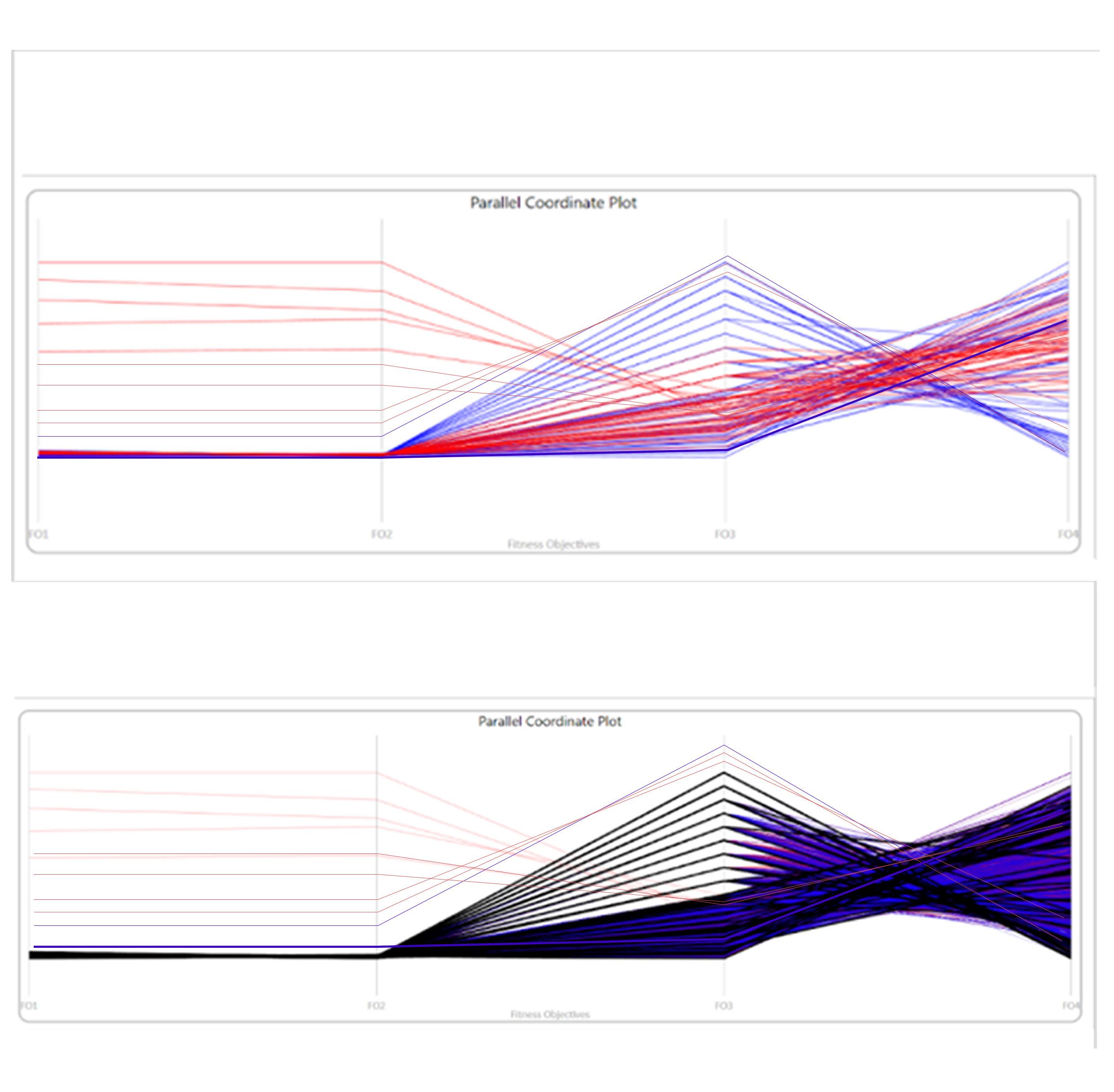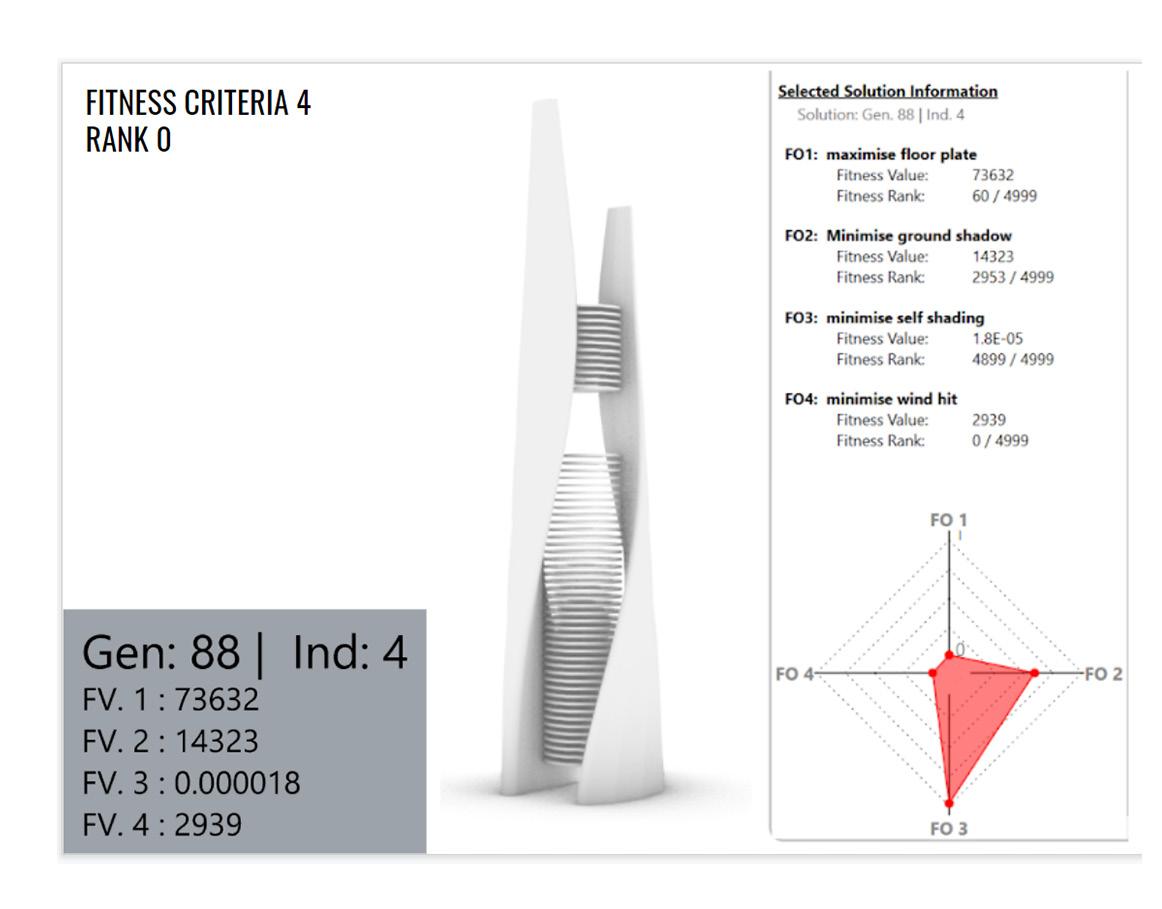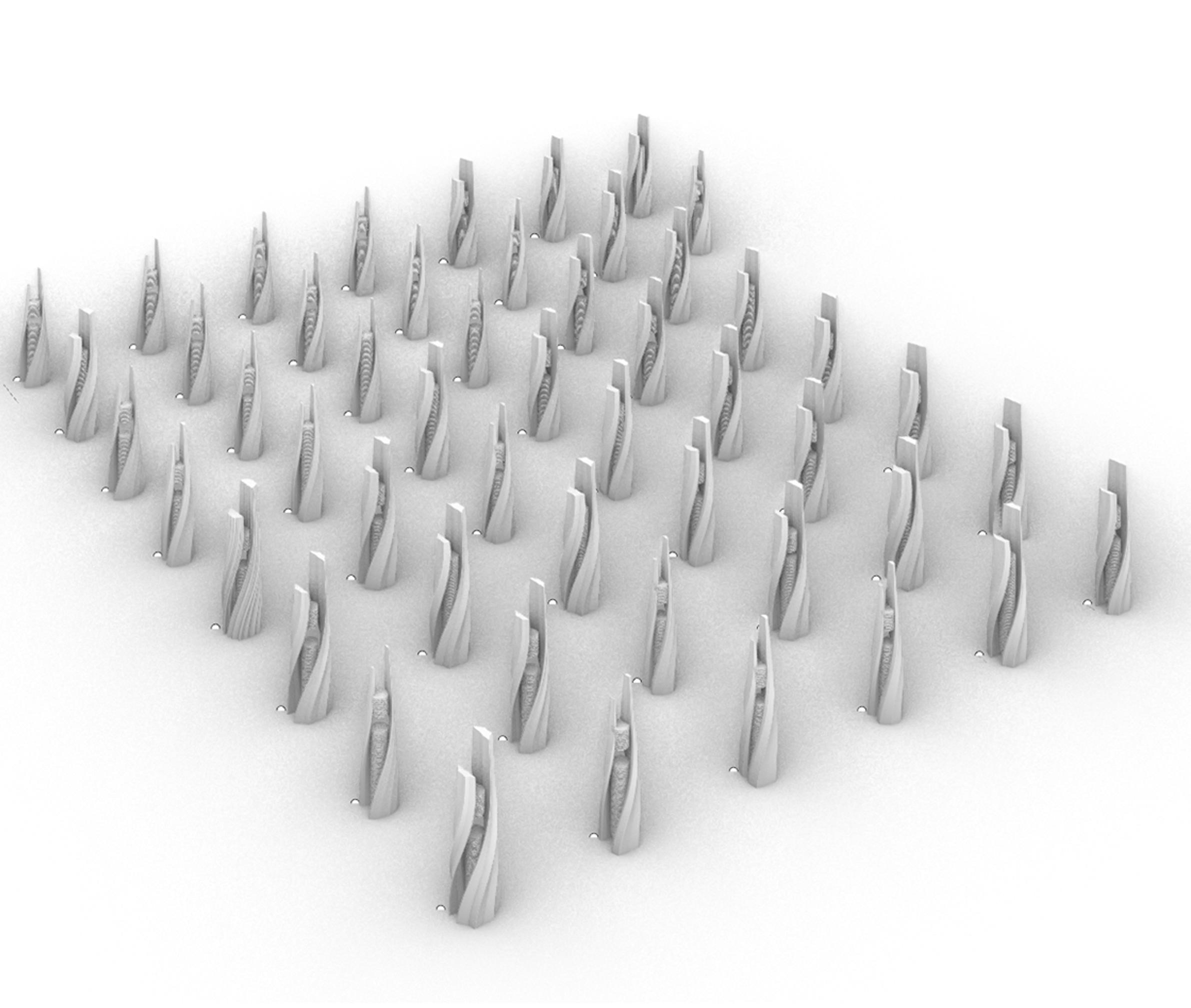
1 minute read
EVOLUTIONARY PROCESS
Trial 1
A first set of experiments with a greater number of fitness criterias that is five in number (figure 11) was run initially consisting of 20 generations of 20 individuals each. In the initial experiments the fitness criterias considered were : maximising sunlight gain, maximising volume, and maximising floor plate area. After reading from the parallel coordinate plot it was realised that these objectives could be clubbed under one category as all of them influenced each other proportionately.Where as, minimising surface area and minimising wind vector hits could be clubbed under one category as they simulated towards producing one common objective.
Advertisement
Trial 2
Hence, the simulation was run with the revised fitness criterias as shown in the evolutionary matrix(figure 7).The purpose of this part of the Stage was to explore the potential of Wallacei/GH plugin within Rhino to simulate a genetic experiment for the evolution of Towers. For the trial number 2 the simulation time was estimated to be run for extremely long hours by Wallacei engine. Hence, it was crucial to restrict the domain of genes. The chromosomes that affected the degree of rotation and the degree of corrugation were restricted as they induced complexity in the phenotypes of the building morphology. After the gene alteration process, another test of a simulation of 20 generations of 20 individuals each was run. As the fitness criterias were adequately contradicting each other, observed from the mean trendline graphs from Wallacei analytics; the simulation was run for optimisation of 100 generations each with a population of 50 individuals.








